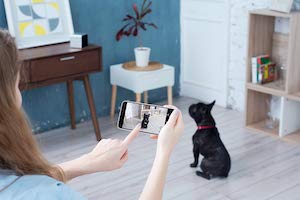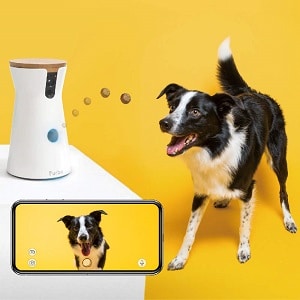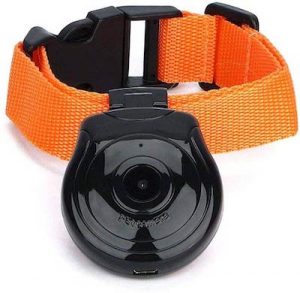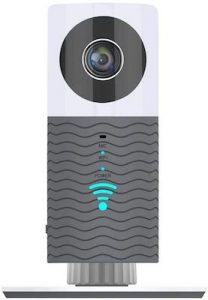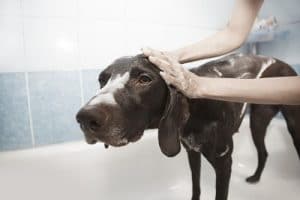As a dog owner, it’s important to be able to keep an eye on your furry friend even when you’re not at home. That’s where a dog camera comes in handy. A dog camera is a special camera designed to help you monitor your dog when you’re not around.
But with so many different types and brands on the market, it can be tough to know which is right for you and your pup.
In the previous article, I gave you the list of the top 10 dog cameras worth buying in the UK in 2023.
I’ll help you decide the best one for your household needs this time. In this guide, I’ll cover everything you must keep in mind – from basics to exciting features like the in-built treat dispenser.
1. Make a budget and stick to it.
Dog cameras can range in price from a few hundred dollars to a few thousand, so it’s important to know how much you’re willing to spend.
When choosing a dog camera, one of the most important things to remember is your budget. There are many great options on the market, but not all will be within your price range.
Take some time to figure out how much you are willing to spend on a camera, and then stick to that budget. A big part of choosing a budget is often evaluating your needs, which is exactly what this buying guide aims to help you with.
2. WiFi Compatibility: 2.4 GHz or 5 GHz
Most dog cameras are compatible with 2.4 GHz and 5 GHz WiFi networks, so it usually depends on your router’s compatibility.
5 GHz networks are typically faster and have less interference than 2.4 GHz networks. It seems like a better option, but it isn’t. They have a lower coverage area than 2.4 GHz networks.
2.4 GHz networks are more common and may be a better option if you’re unsure what frequency your router operates. Suppose you want to check your router’s compatibility. In that case, you can connect your android device to the WiFi and visit WiFi settings.
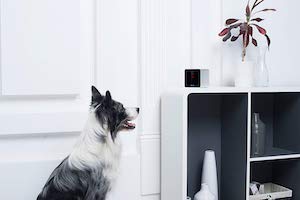
3. The interactivity of the camera
Interactivity is an important factor to consider. It adds a lot more utility to your camera. If you want to be able to interact with your dog while you’re away, look for a camera that offers two-way audio or video.
You can also look for a camera that offers treat dispensing, so you can reward your dog for good behaviour even when you’re not home. Cameras with such features help you have more fun but aid your doggo with problems such as separation anxiety.
Read More: Best Gifts to Buy for Your Dog in UK 2022
4. Video Quality
Get your dog a good camera that captures clear, high-quality video. Otherwise, you won’t be able to see them clearly or capture important moments. Video quality is measured by the number of horizontal lines in any particular frame that makes up a video. They are denoted by a number followed by the letter P, such as 480p, 720p, 1080p and even 2k.
The higher the associated number, the better the video quality. We recommend opting for a camera supporting 720p or better quality. Another thing to consider is the frame rate. A higher frame rate means a smoother video, which is important if you want to watch your dog running and playing.
I recommend opting for cameras which support at least 30FPS video recordings. Again, 60FPS will provide much smoother video in comparison.
5. Motion and Sound Detection
If you’re looking for a dog camera that will help you keep an eye on your furry friend, get a camera with motion and sound detection.
This way, you’ll be alerted if your dog starts barking or if there’s any movement in the room. Look out for motion-detection-enabled cameras that offer different sensitivity levels to ensure versatility. These cameras are connected to your WiFi and will send notifications to the configured device if they detect any motion within its range.
The same can be said for sound detection. A couple of these cameras come with AI-enabled features. Some of them can even differentiate between a human and a dog.
6. Storage
Most dog cameras have a limited amount of storage, so it’s important to choose one that will be able to hold all of the footage you want to capture.
A smaller-capacity camera will suffice if you only need to store a few hours of footage. However, suppose you want to be able to capture days or even weeks of footage. In that case, you’ll need to choose a camera with a larger storage capacity.
If your requirements match the former, I suggest using cameras with a decent storage capacity of around 32GB. If you wish to opt for the latter, you must choose cameras with support for at least 128GB of storage.
Of course, the ideal way to do this is by saving the videos on cloud storage so you don’t lose them.
7. Extra features worth having
When choosing a dog camera, a few extra features might be helpful. Some dog cameras come with a treat dispenser, which can be used to give your dog a treat when you’re not home.
Other dog cameras have a two-way audio feature, allowing you to talk to your dog and hear them bark. Some dog cameras even have a built-in laser pointer, which you can use to play with your dog when you’re not home.
Most dog cameras come with a mobile app that you can use to control specific aspects of the camera, such as the aforementioned two-way audio and treat dispensing features. The apps’ UI and remote features can also be a deciding factor.
Think about which features are most important to you and your pup.
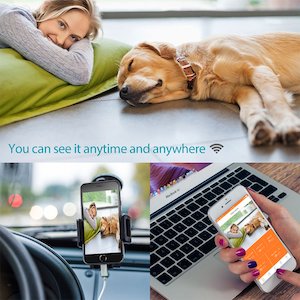
8. Test it out.
Once you’ve narrowed your choices, it’s time to test the cameras. Set them up in your home and see how your dog reacts. You’ll want to ensure the camera is easy to use and that your dog is comfortable.
How to install and use a dog camera at home?
If you’re thinking about using a dog camera to watch your furry friend while you’re away, you should know a few things! Here are some tips on using a dog camera:
1. Choose the right location.
You need to consider your home’s layout. Place the camera where your dog has plenty of space to move around. That way, you can get a good view of their activities.
2. Consider your dog’s temperament.
If your dog is shy or easily startled, having a camera in their space may not take well. In this case, it may be better to choose a location where they can’t see the camera.
3. Test the camera before you leave.
Ensure the camera is working properly and you can see and hear everything. This will help you avoid any surprises when you’re away.
4. Keep an eye on the battery.
If you’re going to be outside for a while, ensure the camera’s battery is fully charged or consider getting a backup battery.
5. Regular check-ins are just as important.
It’s important to check your camera’s functionality regularly to ensure it works properly. If you see anything that concerns you, don’t hesitate to contact the customer support team.
Read More: Barking Dog Alarm Systems UK: Top 8 Alarms to Protect Your Home
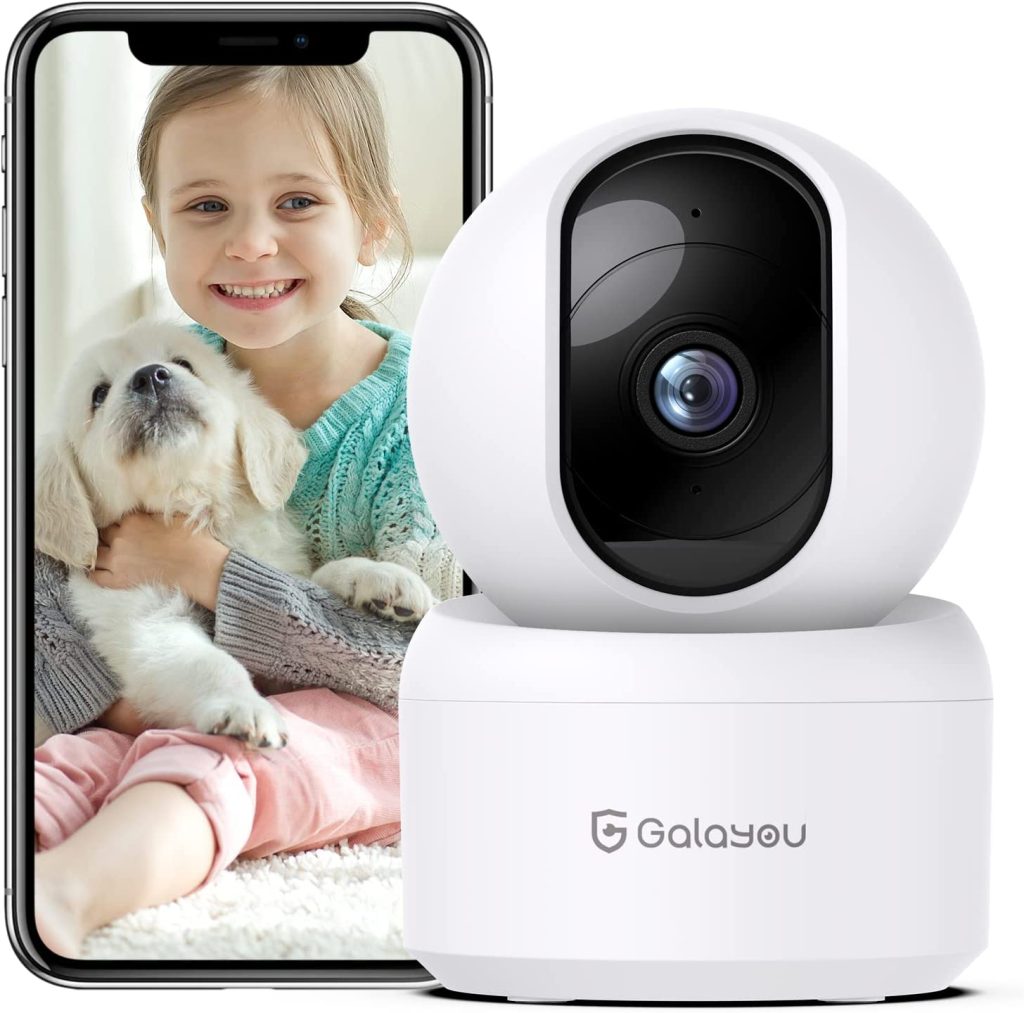
Frequently Asked Questions
1. Is there a camera where my dog can see me?
Many dog cameras allow your pup to see you while you’re away. These cameras usually have a two-way audio feature so you can talk to your dog. Some even have a treat dispenser to give your dog a little snack while you’re away.
2. Should you talk to your dog through a camera?
Generally, it depends on your dog’s personality. If your dog is shy or anxious, talking to them through the camera may make them more stressed.
However, if your dog is outgoing and loves to interact with people, talking to them through the camera may be a fun way to engage with them.
3. Do pet cameras help with separation anxiety?
Some pet parents find that using a pet camera helps their dog with separation anxiety. The dog can see and hear its pet parent through the camera, which can help reduce the dog’s anxiety.
4. Which is the best dog camera on the market?
There are many different dog cameras in the UK market with excellent features and design quality. The Furbo Dog Camera is the best of them all. Furbo offers premium features like an in-built live treat dispenser and Amazon Alexa integrations.
5. Can pet cameras be hacked?
Generally, dog cameras can be easily hacked as they’re not very secure against modern hacking algorithms. Although, you can minimise the risk by taking certain precautions and necessary steps.
Here’s how you can protect your dog camera from getting hacked:
- Choose a camera that uses WPA2 encryption for its wireless connection. It’s currently the most secure type of encryption available.
- Change the default password for the camera.
- Make sure to choose a strong password that would be difficult for a hacker to guess.
- Keep the firmware for the camera up to date.
- Be aware of the signs that your camera has been hacked. It includes strange activity on your network, unexpected changes to the camera’s settings, or unusual behaviour from your pet.
If you suspect your camera has been hacked, take action immediately to secure it and prevent further damage.
